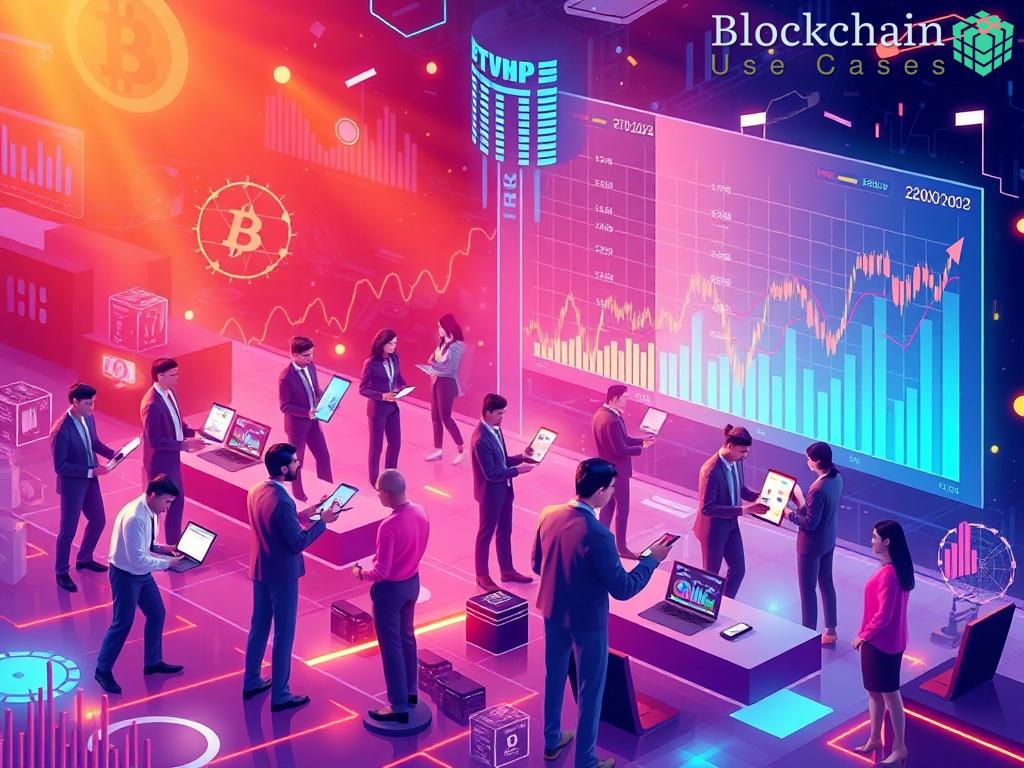Understanding Decentralized Options Trading
Options trading has long been a significant component of the financial markets, providing investors with the ability to hedge risks or speculate on price movements. However, the advent of blockchain technology has introduced a paradigm shift, enabling decentralized options trading. This transformation is not merely a trend; it represents a fundamental change in how derivatives can be structured, traded, and settled.
In decentralized options trading, blockchain technology facilitates peer-to-peer transactions without the need for intermediaries. This system enhances transparency and security while minimizing the costs associated with traditional trading platforms. Smart contracts, which are self-executing contracts with the terms directly written into code, play a crucial role in automating and enforcing agreements between parties.
Here’s a brief overview of how decentralized options trading operates:
- Smart Contracts: Automated agreements that execute trades based on predetermined conditions.
- Decentralized Exchanges (DEXs): Platforms that allow users to trade options directly with one another.
- Liquidity Pools: Collections of tokens that provide liquidity for trades, ensuring market efficiency.
- Tokenization: The process of converting rights to an asset into a digital token on the blockchain.
While decentralized options trading offers numerous advantages, it is not without its challenges. Understanding both sides is essential for investors looking to navigate this new landscape.
| Advantages | Challenges |
|---|---|
| Enhanced Security | Smart Contract Vulnerabilities |
| Lower Fees | Regulatory Uncertainty |
| Increased Transparency | Market Volatility |
| Global Accessibility | Technical Complexity |
In summary, decentralized options trading represents a significant advancement in the derivatives market, driven by blockchain technology. As the ecosystem continues to evolve, participants must remain informed and vigilant to leverage these innovations effectively.
Blockchain Technology and Its Impact on Derivatives

As financial ecosystems evolve, blockchain technology emerges as a transformative force, particularly within the derivatives markets. Its unique attributes—decentralization, transparency, and security—are redefining how derivatives, including options, are structured and traded. Understanding these impacts allows market participants to grasp the full potential of blockchain innovations in finance.
Traditional derivatives often rely on centralized entities for clearing and settlement, which introduces risks and inefficiencies. The integration of blockchain technology allows for a rethinking of these structures, enabling a more streamlined approach:
- Smart Contracts: Automated agreements that execute trades and settle transactions without human intervention.
- Immutable Records: Every transaction is recorded on the blockchain, creating a permanent and tamper-proof ledger.
- Decentralized Custody: Assets are held in a distributed manner, reducing counterparty risk.
This shift not only enhances operational efficiency but also significantly reduces the potential for fraud and manipulation, creating a more robust derivatives marketplace.
To illustrate the stark contrast between traditional and decentralized derivatives trading, consider the following table:
| Aspect | Traditional Derivatives | Decentralized Derivatives |
|---|---|---|
| Counterparty Risk | High due to reliance on intermediaries | Minimized through smart contracts |
| Transaction Costs | Higher due to fees from brokers and exchanges | Lower, as transactions occur directly between parties |
| Transparency | Limited visibility into trades and positions | Full transparency via public blockchain records |
| Market Access | Restricted to specific platforms and jurisdictions | Global access with fewer barriers to entry |
This comparison underscores how blockchain technology is not merely an enhancement but a fundamental change in the way derivatives can operate.
As blockchain continues to gain traction, the derivatives market’s future appears poised for monumental changes. Key areas to watch include:
- Further advancements in regulatory frameworks that accommodate decentralized trading.
- Innovation in liquidity solutions that enhance market stability.
- Education and outreach to drive adoption among traditional investors.
By embracing these changes, market participants can not only mitigate risks but also harness the full potential of decentralized options trading.
Benefits and Challenges of Decentralized Trading Platforms
The rise of decentralized trading platforms has ushered in a new era for options trading, driven by the principles of transparency, efficiency, and autonomy. One of the most compelling advantages is the enhanced security that these platforms offer. By eliminating the need for intermediaries, trades are executed directly between parties, significantly reducing the risk of fraud and counterparty defaults. Furthermore, the use of smart contracts ensures that the terms of the trade are automatically enforced, providing traders with greater peace of mind.
Another notable benefit is the cost-effectiveness of decentralized options trading. Traditional platforms often impose hefty fees due to their reliance on brokers and centralized clearinghouses. In contrast, decentralized exchanges minimize these costs, allowing users to retain a larger share of their profits. The absence of intermediaries also leads to a more efficient trading process, enabling quicker execution times and reduced slippage.
Despite the many advantages of decentralized trading platforms, they are not without their challenges. One of the most pressing issues is the regulatory uncertainty that surrounds them. As governments and financial authorities scramble to catch up with this rapidly evolving technology, traders often find themselves navigating a complex legal landscape. The lack of established regulations can lead to confusion and potential legal repercussions, making it essential for users to stay informed about the latest developments.
Moreover, decentralized platforms can pose technical complexities that may deter less experienced traders. The intricacies involved in setting up wallets, managing private keys, and understanding blockchain mechanics can be overwhelming. This steep learning curve may hinder broader adoption, as traditional investors may prefer the familiarity and support provided by conventional trading platforms. Additionally, while decentralized systems offer increased transparency, they can also expose users to heightened market volatility, as price movements can be more pronounced when liquidity is thin.
Regulatory Considerations in Decentralized Options Markets
The emergence of decentralized options trading has ignited discussions surrounding the regulatory framework necessary to govern these innovative platforms. As blockchain technology reshapes the derivatives landscape, regulators face the challenge of balancing innovation with investor protection. Understanding the regulatory considerations is crucial for participants in this evolving market.
The decentralized nature of blockchain technology poses unique regulatory challenges that differ significantly from traditional financial markets. In decentralized options trading, the absence of a central authority complicates the identification of responsible parties for compliance with financial regulations. This creates a grey area for regulators aiming to protect investors without stifling innovation.
As decentralized options trading transcends national borders, harmonizing regulations at an international level becomes imperative. Different jurisdictions may adopt varying approaches to regulation, resulting in a fragmented landscape. Here are several key considerations:
- Jurisdictional Ambiguity: Determining which country’s regulations apply can be challenging when trades occur globally on decentralized platforms.
- Consumer Protection: Regulators must ensure that users are safeguarded against fraud and market manipulation in a decentralized environment.
- Tax Implications: The classification of digital assets and incomes from decentralized trading has significant tax consequences that vary by jurisdiction.
- AML and KYC Compliance: Anti-money laundering (AML) and know-your-customer (KYC) requirements may be difficult to enforce in a decentralized setting.
As the decentralized options market continues to mature, the focus will likely shift towards creating a cohesive regulatory framework that embraces innovation while ensuring market integrity. Stakeholders, including regulators, industry participants, and technology developers, must collaborate to develop guidelines that address the unique challenges of decentralized trading. By fostering an environment where innovation and compliance coexist, the derivatives market can fully harness the transformative potential of blockchain technology.
Future Trends in Blockchain-based Derivatives Trading
The landscape of blockchain-based derivatives trading is not static; it is continuously evolving. As technology advances, market participants are poised to witness innovations that will redefine trading strategies and enhance market efficiencies. A crucial component of this future will focus on how decentralized platforms can integrate advanced technologies such as artificial intelligence and machine learning to optimize trading operations. By leveraging these technologies, traders can develop more sophisticated models that predict market trends and enhance decision-making processes.
Moreover, the future will likely see the development of more intuitive user interfaces that lower the barrier to entry for novice traders. By combining user-friendly designs with the underlying complexities of blockchain, these platforms aim to attract a broader audience, fostering a more inclusive trading environment.
As decentralized trading matures, a trend towards hybrid models that combine elements of both centralized and decentralized systems is anticipated. These hybrid platforms will harness the benefits of traditional finance—such as regulatory compliance and customer support—while also offering the advantages of decentralization, including lower fees and enhanced security. This dual approach could bridge the gap between traditional traders and the decentralized community, fostering a collaborative ecosystem.
Furthermore, we may see increased participation from institutional investors, attracted by the growing acceptance and regulatory clarity surrounding decentralized derivatives. Institutional involvement could lead to greater liquidity and market stability, which are essential for the healthy growth of this emerging sector. In this context, the role of custodial services that cater specifically to digital assets will become increasingly vital, ensuring that large-scale investors can engage in decentralized options trading with confidence.
As the decentralized options trading market expands, there will be a pressing need for global standardization in practices and regulations. With various jurisdictions adopting diverse approaches to blockchain regulation, the establishment of universal guidelines will be crucial for fostering trust among participants. A unified regulatory framework can enhance market transparency, protect investors, and facilitate cross-border trading.
To support this initiative, international organizations and regulatory bodies will need to collaborate closely, sharing insights and best practices to create a cohesive environment for all stakeholders. This collaboration could significantly mitigate the risks associated with jurisdictional ambiguity and ensure that decentralized trading platforms operate within a secure and compliant framework.





